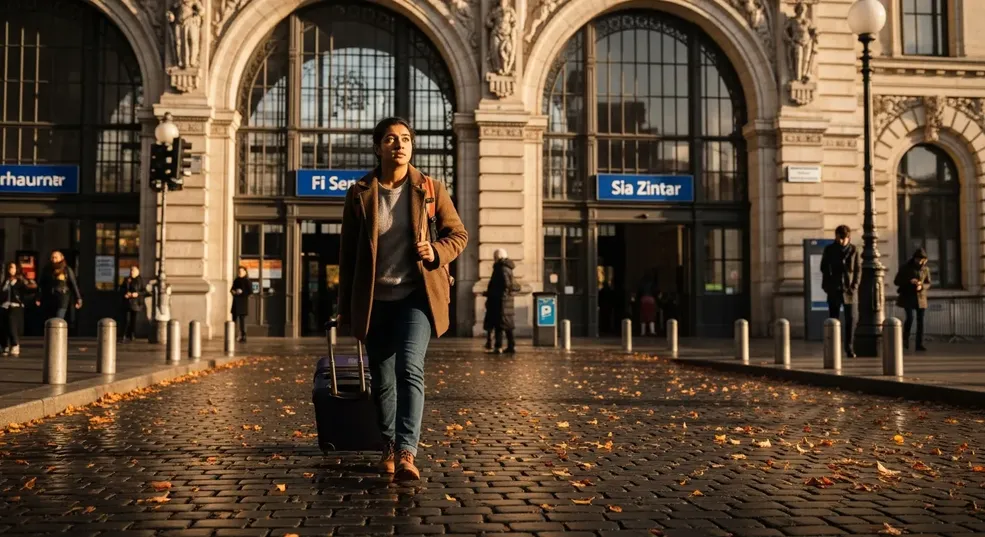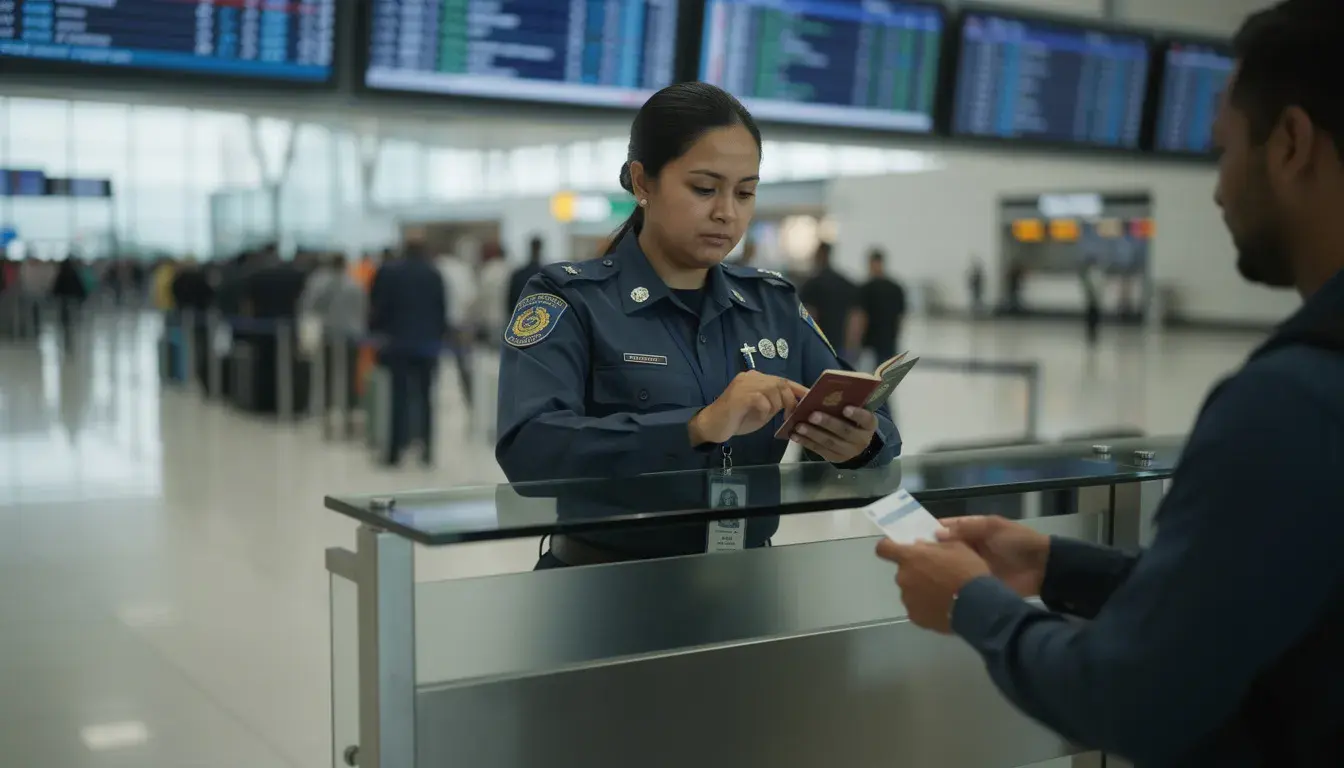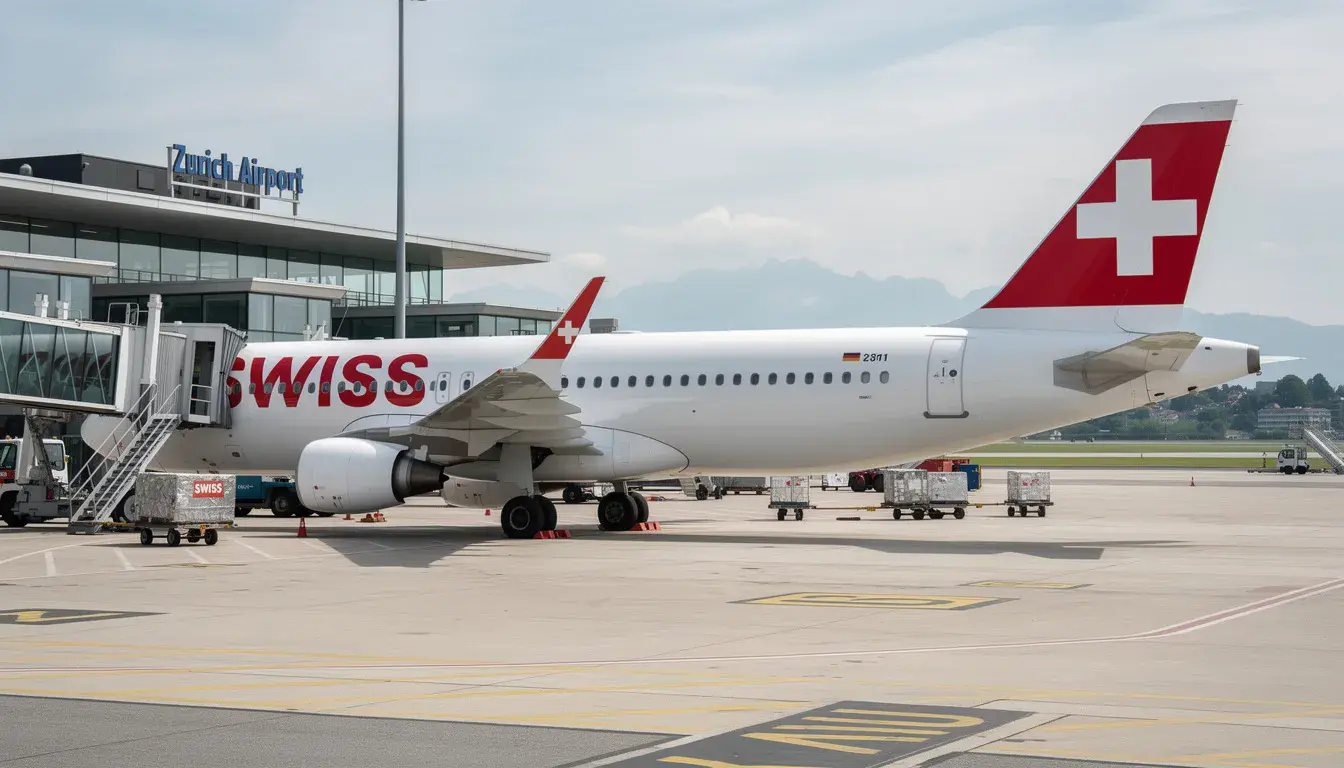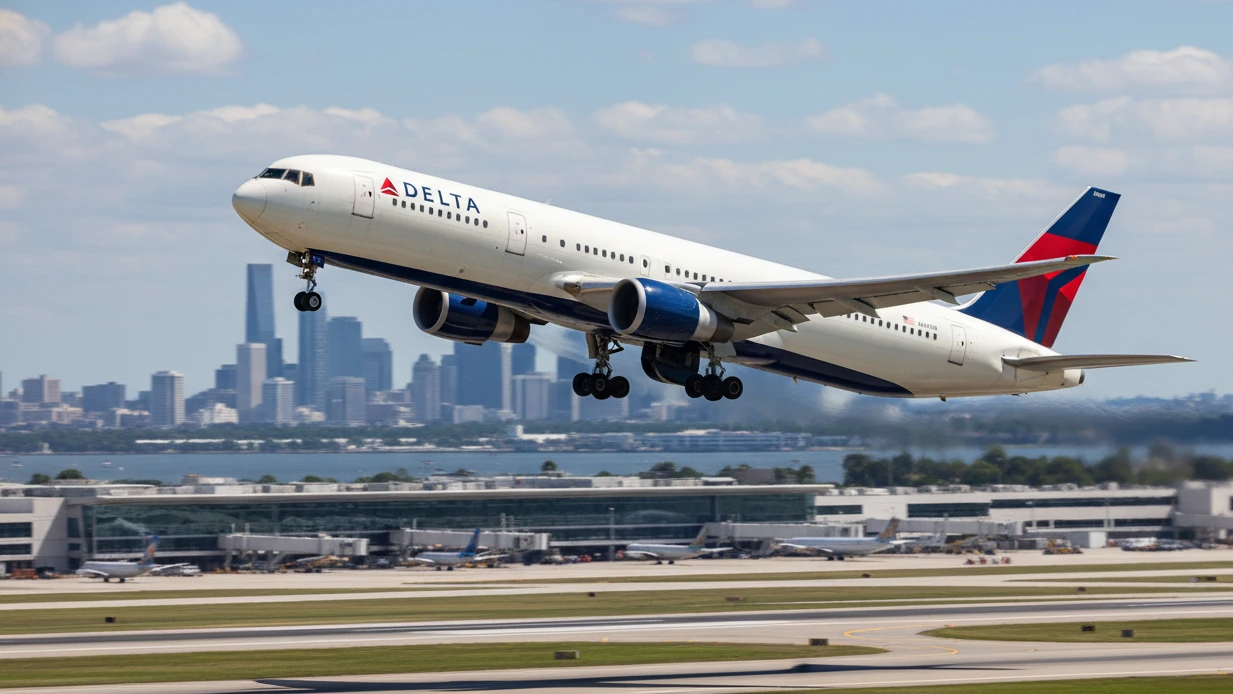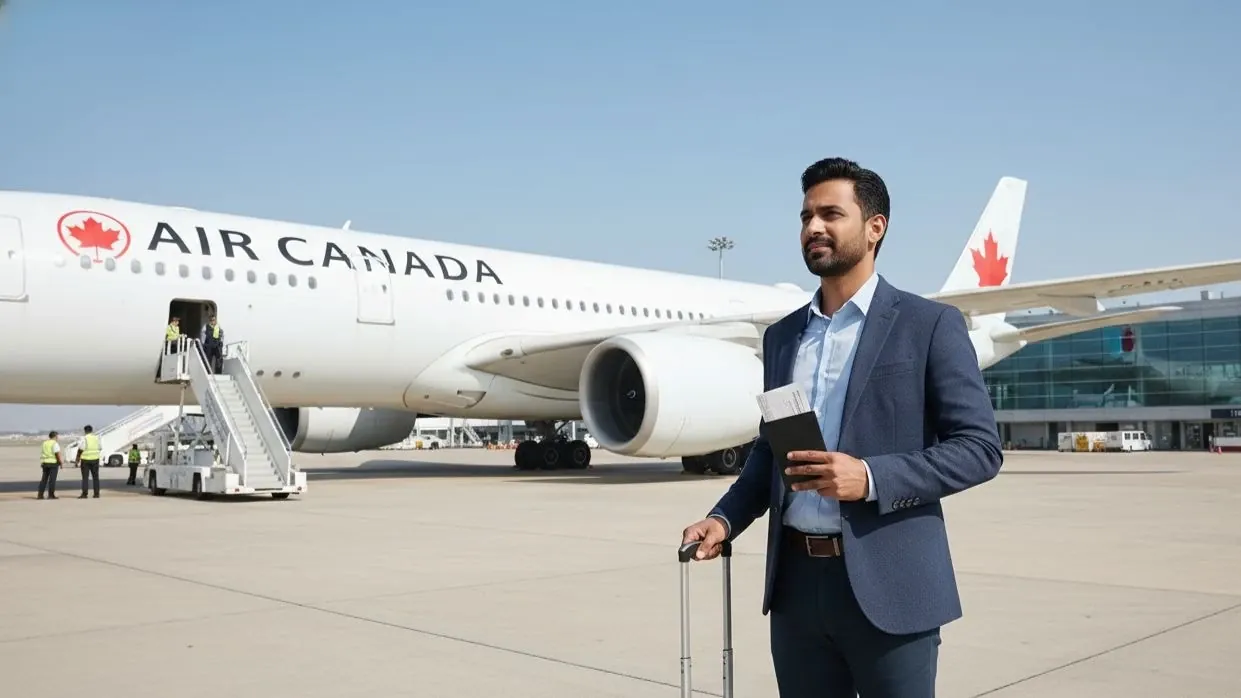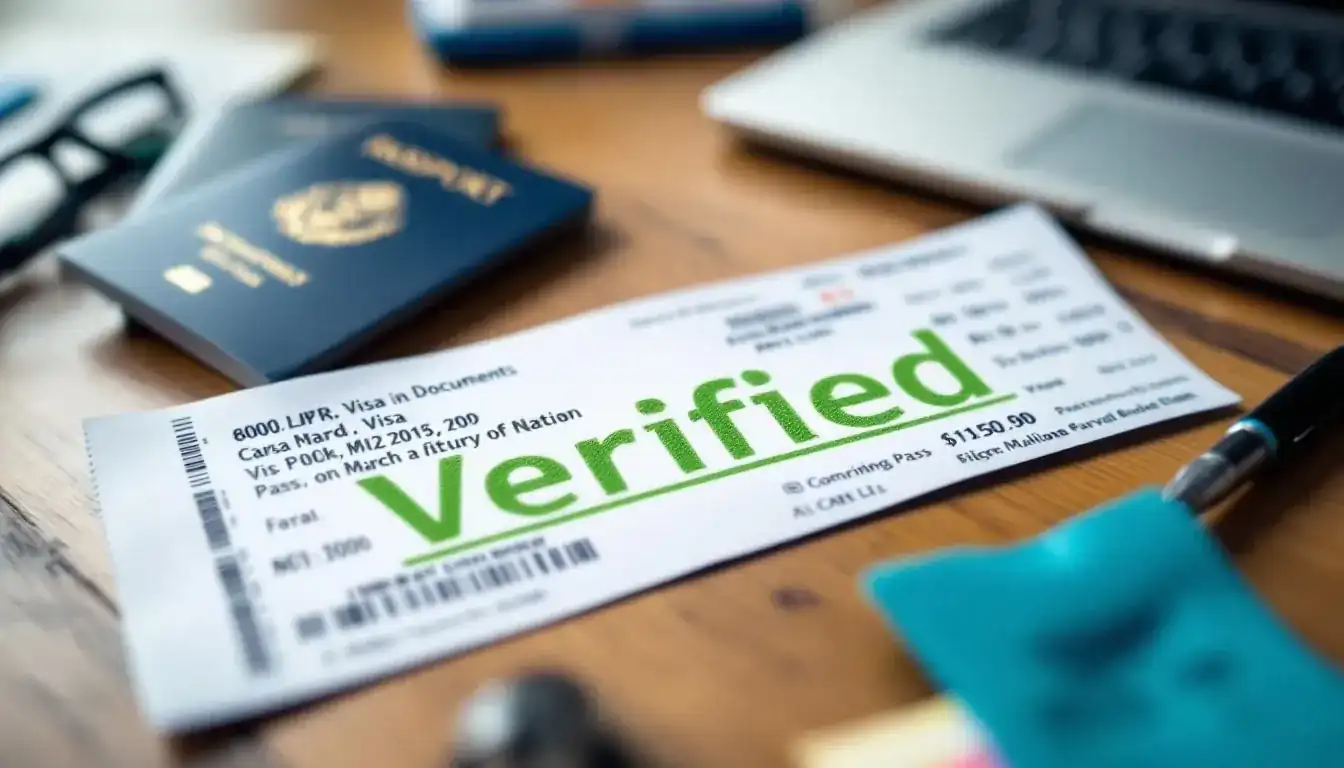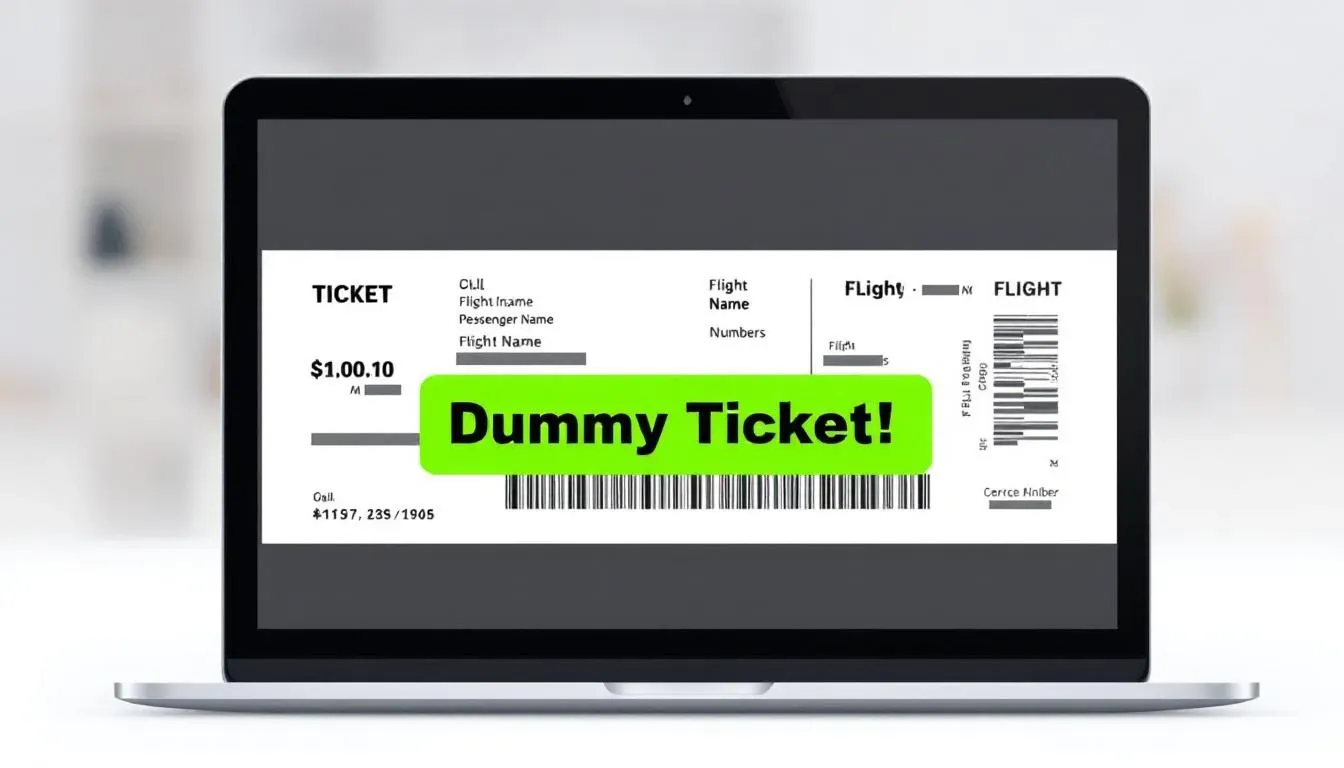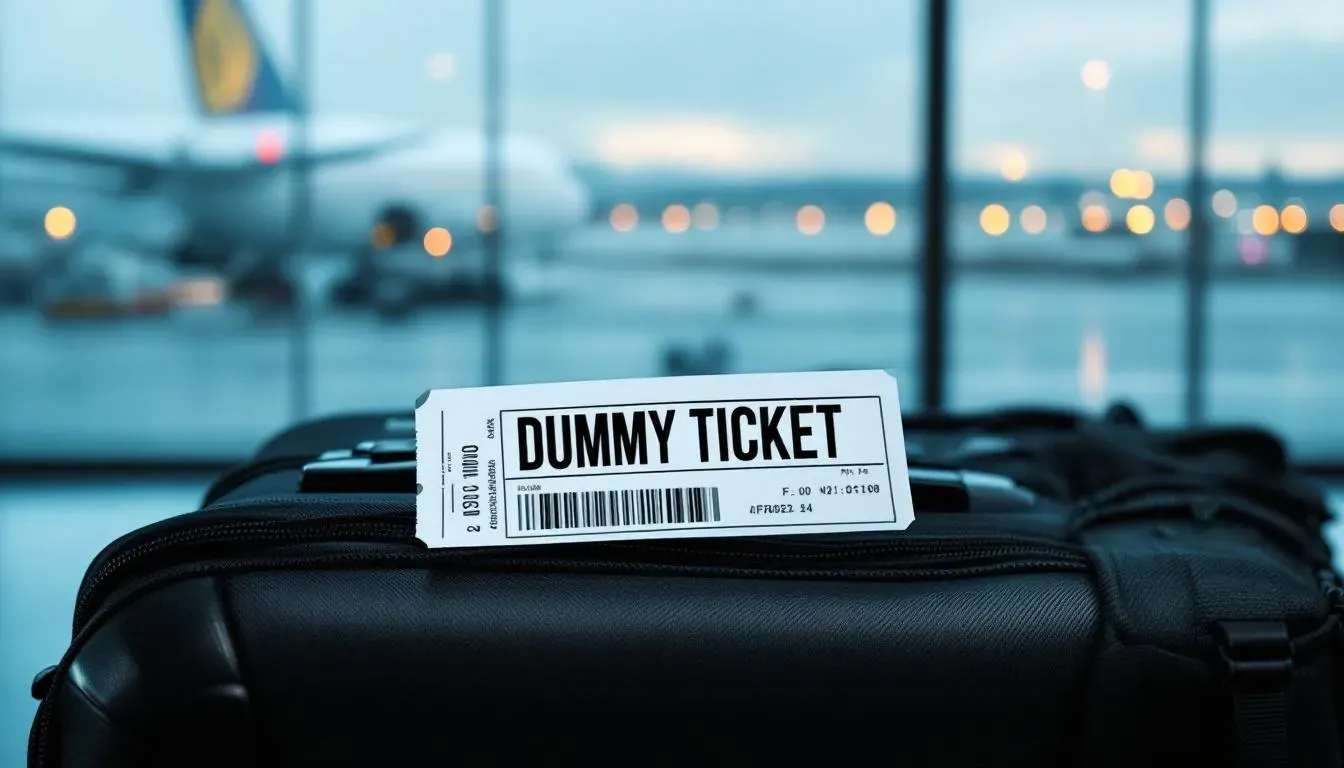Type D Schengen Visa Guide: Do You Really Need a Flight Itinerary?
Planning a long stay in Europe comes with moving parts. You have admission letters, contracts, family paperwork, and timelines that keep shifting. In the middle sits one practical question: do you really need a flight itinerary for a Type D Schengen visa? A dummy ticket can provide the flexible proof many applicants need without upfront costs. For more details on visa documentation, check our FAQ. Type D is the national long-stay route for study, work, and family reunion, issued by a single Schengen country.
Type C is the short-stay visitor visa. Different goals, different playbook, and different expectations around travel proof. Some consulates want a reservation at submission, others accept it later, and a few ask for a confirmed ticket only before printing the visa. Explore our blogs for tips on preparing your application. We cut through the noise so you can show the right evidence, save money, and keep your plan flexible. Get visa-ready now—start your dummy ticket booking in minutes.
flight itinerary for Type D Schengen visa is one of the most useful documents travelers prepare when organizing international trips. While most countries do not ask you to buy a fully paid ticket upfront, they do expect a verifiable proof of travel intent that clearly shows your entry and exit plan. This helps demonstrate that you will follow your schedule and return on time.
Using a professionally issued and verifiable flight itinerary for Type D Schengen visa is the safest and most convenient way to satisfy this requirement without financial risk, especially for visa applications and immigration preparations.
Last updated: November 2025 — verified against the latest traveler documentation practices and global consular guidelines.
Type D Vs Type C: How Your Flight Proof Really Changes
You already know the basics. What you need now is a clear, India-focused playbook for travel proof. Let’s set the context, then get into what consulates actually expect and how you can meet that bar without burning cash. Need a flexible plan? Book a dummy ticket you can update anytime.
Why Purpose And Authority Matter For Travel Proof
Type D is the national long-stay route. One Schengen country evaluates your purpose, your timeline, and your plan to live there. Type C is the short-stay visitor visa. That difference shifts the rules of the game.
With Type D, national law and consulate practice matter more. Each post can set its own approach to documents and timing. Many will ask for “proof of travel arrangements,” yet they also warn you not to buy a non-refundable ticket before a decision. That looks contradictory until you remember the goal. Officers want to see realistic plans that match your dates, not proof that you paid in full on day one. For official guidelines, see the Schengen Visa Info site.
So, Is A Flight Itinerary Legally Mandatory For Type D?
Strictly speaking, not always. For long-stay files, a paid ticket at submission is rarely a legal must. What you will see, though, is a consistent expectation to show a reservation or itinerary that aligns with your start date, your accommodation start, and your insurance start.
Think of it as a timing check. Your itinerary shows how you plan to arrive and when. If a post requires a confirmed ticket, it often comes later, just before visa printing or at passport collection. That way you do not carry the risk of a costly change while the decision is pending.
When “Requested” Turns Into Expected At The Counter
In India, most applicants file through VFS. Screeners look for a tidy file that tells a coherent story. If the checklist mentions “proof of travel arrangements,” the staff will usually expect to see something. It does not have to be a fully paid ticket, but it should be legible, verifiable, and current.
What helps you sail through:
- Your name and passport details match exactly.
- Dates align with your admission or contract.
- The routing makes sense for your destination city.
- The booking can be verified by PNR or airline tools.
What slows you down:
- Expired holds or unverified screenshots.
- Itineraries that arrive after your insurance starts.
- Mismatched dates across your form, letters, and travel plan.
Students, Workers, And Family: What Makes Sense In Practice
The right approach depends on why you are going.
Students. One-way travel is normal. Your arrival should sit a few days before orientation. If your university city differs from your first Schengen entry, show the internal connection or explain the plan in one line. If your intake shifts, update the itinerary. Many posts accept an updated reservation rather than a paid ticket during processing.
Workers. Align your plan with the onboarding date in your contract or HR letter. A one-way makes sense, but the arrival should not cut it too close. If HR keeps the start date flexible, reflect a sensible window. Show intent with a reservation that can be moved if the employer finalizes later.
Family Reunion. One-way is fine for the primary applicant. If children travel later, show a staggered plan. Keep school term dates in mind. Officers look for a realistic settling-in timeline, not a last-minute scramble.
Across all profiles, clarity beats commitment. A verifiable reservation that matches your purpose and dates is stronger than a fully paid ticket that conflicts with your documents.
How Officers Read Flexible Or Tentative Bookings
Most consulates are comfortable with tentative bookings for Type D, especially during the decision phase. What matters is credibility. If your PNR is real and your dates make sense, you have done the job. If your course or work start time moves, send an updated itinerary. Short, clean updates are normal and do not hurt your case when they maintain internal consistency.
A paid ticket can still backfire if your file needs extra checks, your appointment was late in the season, or your employer revises timelines. Flexibility protects you from change fees and refund risks.
India Reality Check: Appointments, Timing, And Budget
Your strategy must reflect India’s filing conditions. Peak months mean fewer appointments and longer queues at VACs. Average families and students also manage INR budgets with care. Here is how you keep control.
Time your itinerary.
- Prepare a reservation for submission if the checklist asks for travel proof.
- Keep the validity long enough to cover the appointment and early processing.
- Refresh it if the decision runs longer than expected.
Protect your money.
- Avoid non-refundable tickets before a decision unless the post explicitly requires them at that stage.
- If prices are rising, explore refundable or flexible fares with clear rules. Read the fine print from Indian OTAs and banks.
Keep the dates in sync.
- Course or contract start, accommodation start, insurance start, and flight arrival should line up.
- If your plan changes, update the weakest link first. Usually, the itinerary, then the insurance start date, if needed.
Plan for routing reality.
- Your first Schengen entry may be a hub, not your final city. Build the internal leg into the plan or explain it briefly.
- Avoid gaps that suggest you will arrive without a place to stay or valid insurance.
You are not expected to gamble on a non-refundable ticket on day one. You are expected to show a believable, verifiable plan that fits your purpose and dates. For most Indian applicants, that means a reservation or flexible option at submission, then a confirmed ticket only when the consulate asks for it near issuance. Keep it clean, keep it consistent, and keep it adjustable. That is how you meet the requirement in spirit and protect your wallet at the same time.
What Embassies Really Mean By “Proof Of Travel Plans”
You see the phrase often, but it is not always clear what sits behind it. Let’s decode how consulates phrase their request, what they accept in practice, and how you can meet the bar without paying for a non-refundable ticket too early. Avoid last-minute stress with a quick dummy ticket booking.
The Language On Checklists: How To Read It Like An Insider
Most Type D checklists use simple wording. You will see “proof of travel arrangements,” “flight reservation,” or “travel itinerary.” Some posts add a caution that you must not buy tickets before a decision. Treat this as a green light to submit a reservation rather than a fully paid ticket at the start.
When a post wants a confirmed ticket, it usually says “must be presented prior to visa issuance” or “provide paid ticket upon approval.” That is your cue to hold off on paying until they are ready to print the visa.
Reservation, Itinerary, Ticket: What Counts And When
These terms look similar. They are not the same.
- A reservation means a bookable record with your name. Preferably with a PNR that can be checked.
- An itinerary can be a route plan or a reservation. Officers prefer something traceable.
- Paid Ticket is a fully issued e-ticket. Typically requested later for Type D, not at day one.
For students, workers, and family reunions, a one-way plan is normal. Your goal is to show credible arrival timing, not return plans.
One-Way, Return, Or Onward: Which One Fits Your Story
Pick what matches your purpose and dates.
- Students. One-way is standard. Arrive a few days before orientation. If your course is in a smaller city, show your domestic or intra-Schengen connection alongside the international leg.
- Employees. One way usually suffices. Match your arrival with onboarding. If HR gives a window, reflect it with reasonable dates.
- Family Reunion. One way for the primary applicant is fine. If dependents join later, add a simple note or a staggered reservation.
Return tickets are rarely necessary for Type D, unless a specific post says otherwise. Onward legs inside the Schengen Area are helpful when your port of entry differs from your final city.
How Officers Judge Flexible Or Tentative Bookings
Consulates understand that plans move. They accept provisional reservations when the PNR is verifiable and the details match your documents. If your start date shifts, you can refresh the reservation with new dates. Keep the change simple. Re-upload or email the update only if the post allows that channel. Otherwise, carry the updated version to your appointment or collection.
Avoid screenshots that cannot be verified. A clean PDF with names, dates, and flight numbers reads best at the counter.
Timing Expectations: Submission, Decision, And Before Printing
Think of travel proof in three moments.
- At Submission. Many posts want a reservation that proves intent to travel and aligns with your purpose and insurance start.
- During Processing. You may be asked for an updated itinerary if dates move. Keep a fresh copy ready.
- Before Visa Issuance. Some posts request a confirmed, paid ticket just before they print the visa sticker. This protects you from early change fees.
If your checklist or appointment portal is vague, plan for a reservation at submission and be ready to convert to a paid ticket only when requested.
What “Verifiable PNR” Means In Real Life
A PNR is a booking record. Officers or VAC staff may check it through airline systems. That is why details must match exactly.
- Name and passport number as in your application.
- Flight numbers, dates, and routing that match your purpose.
- Validity that covers the appointment period and near-term processing.
If a reservation expires mid-process, refresh it. A new reservation with the same logic is fine. It shows you are organised and serious.
India-Specific Filing Realities You Should Plan Around
India’s appointment cycles can be tight. Peak months bring crowds for student intakes and corporate transfers. Use a reservation that lasts through appointment week, with enough buffer for processing. If you file from a city where you must travel to a VFS hub, keep extra printouts. Counters often accept clear black-and-white copies, but bring a fresh colour print if your PDF is dense.
Digital copies matter too. Save the PDF on your phone and email it to yourself. If the VAC asks for a soft copy, you can forward it on the spot.
Align All Dates So Your Story Holds Together
Officers look for consistency, not fancy paperwork. Cross-check the following:
- The course or contract start date lines up with the flight arrival.
- The accommodation start date is not after you land.
- Insurance starts on or before the travel day.
- Children’s school term and family travel plan make sense together.
If one date changes, review the whole chain. Fix the itinerary first, then adjust insurance and accommodation letters as needed.
Multi-City And Open-Jaw Plans: Keep It Logical
Your first landing may be Frankfurt, Paris, or Amsterdam, while your university or employer is in a different city. That is common. Show the connection or add a one-line note explaining the onward leg by train or short flight. Avoid leaving a mystery gap between landing and check-in. The simpler your path looks, the quicker your file moves.
Quick Mistake Check Before You Submit
Run this five-minute audit before biometrics or passport drop:
- Name and passport number are correct on the reservation.
- PNR is live and can be checked.
- Dates align across admission or contract, accommodation, insurance, and travel.
- Routing is realistic for your final city.
- PDF is clean, readable, and recent.
Do this, and you give the officer exactly what they need. Clear plans. Verifiable details. No unnecessary spending. That is how you meet the requirement and keep control of your timeline.
Type D Application Walkthrough: Where The Flight Itinerary Fits In
You want a clean roadmap from India that keeps costs low and the file airtight. Follow this flow, place the itinerary at the right checkpoints, and keep every date consistent with your purpose and timeline. Before your appointment, book a dummy ticket and keep dates aligned.
The Step-By-Step Flow To Get Your Residence Permit
Start by mapping your purpose. Type D is a national visa aimed at study, work, family reunification, or academic research. Build your file in this order so the travel plan slots in naturally.
- Confirm your purpose letter. That could be an admission, an employment contract, or proof tying you to the host.
- Arrange accommodation. A lease, dorm letter, or host confirmation helps show an intended stay that makes sense.
- Buy compliant travel insurance covering emergency medical care from arrival.
- Prepare identity documents. You need a valid passport with blank pages and a validity period extending at least three months beyond the end of your initial stay.
- Complete the visa application form online where available, then print and sign the application form.
- Gather required documents, including financial means and any medical exams if your destination asks for them.
- Create a flight reservation timed around start dates. This is where a one-way plan typically fits for a long stay visa or type D visa.
- Book your appointment at the visa application center. Many applicants file through a visa application centre like VFS in New Delhi or regional hubs.
- Pay the application fee or visa application fee and any optional service or additional fee for SMS alerts or courier. Local service tax may apply.
- Attend biometrics at the application centre, submit the following documents, and keep copies.
- Track processing time and respond to any email requests for additional documents or contact details.
Your itinerary should be present at steps 7 and 10. Keep it updated if dates move before a decision.
The Full Document Set—And Cross-Checking Dates
Think of your file as a timeline proof. The pieces must agree.
- Identity. Passport, photos with a white background, and contact details that match the application form.
- Purpose. Admission for study, an employment contract for work, or family documents for family members.
- Stay. Accommodation letters and a plan for a residence permit at the destination once you arrive. Many countries issue a residence permit card after landing.
- Insurance. Travel insurance that covers you from the day you fly.
- Finance. Statements that meet the threshold for the EU countries you are heading to.
- Travel plan. A reservation aligned with the course start or onboarding.
- Extras. Some posts ask for the general overview of your itinerary within the Schengen states if you plan internal travel.
Match these dates carefully. Insurance start should not trail your arrival. Accommodation should not begin after you land. If the university city differs from your first landing, show the onward leg or explain it. That is how your visa application process reads clean, and the visa is more likely to be marked as visa valid without queries.
Students: Aligning With University Timelines
Students often arrive a few days before orientation. Build a margin for SIM, bank, and housing check-in. If your school is outside a major hub, include the local train or flight. The idea is to show a credible path from the international transit area to your final city within a reasonable day period. If your intake shifts, refresh the reservation and, if needed, adjust insurance. For some programmes, foreign affairs websites note that a confirmed ticket may be needed only before printing, not at submission. Please note that each post sets its own practice.
Employees: Coordinating With HR
Your itinerary should match probation or training dates in your job letter. If HR gives a window, reflect a sensible arrival inside that 180-day period that many member states use for long-stay calculations. If a work permit decision affects timing, keep the reservation flexible. Officers want to see a plan that fits the employment contract and the intended stay, not proof of spend on day one.
Family Reunion: Planning Around School And Settling In
For family reunification, one-way for the principal is normal. If children travel later, show a staggered plan and note school term dates. Some posts accept a reservation at submission and a paid ticket before collection. After arrival, you will convert the visa into a residence permit with the local authorities. Carry originals because other Schengen countries may ask for them during internal travel.
Minors And Edge Cases
For minors, include consent forms and routing that avoids risky overnight connections. If you transit a hub, check if an airport transit visa is required for your nationality. Citizens of certain regions may be exempt when traveling to EU countries, the European Union, or the European Economic Area, but confirm for your home country. If you touch San Marino or microstates during a visit, make sure connections remain logical within Schengen states.
Updating After Submission—Without Derailing Your File
Plans change. Keep updates simple and traceable.
- Refresh the reservation if it expires. Use a verifiable PNR and ensure names match exactly.
- If dates move, confirm that insurance and accommodation also move.
- If your course or job defers, send the update through the channel your post allows, whether portal upload or email.
- Recheck photos, blanks, and signatures so the application process stays smooth.
Avoid turning a Type D case into a short-term visa scenario by submitting return tickets that contradict your national visa purpose. A D visa leads to a valid residence permit on arrival, which is why one-way plans usually make sense. Some posts will list visa categories on their site, explaining when a confirmed ticket is required. Read those pages, especially sections from foreign affairs ministries, to confirm any validity period rules, 90-day references, and the following cases that trigger extra checks.
Before your appointment, do a final sweep:
- Application form printed and signed.
- Visa fees ready, plus any optional service you actually need.
- Photos with a white background and the right size.
- Work permit or admission letter in originals.
- The following documents are arranged in order, including travel insurance and an itinerary.
- Two blank pages in the passport and at least three months of validity after the end date.
- If you already hold a valid residence permit in another country, disclose it. A valid residence permit can affect routing through the international transit area.
Handled this way, your type D visa file tells a single, consistent story from India to arrival. The itinerary is proof of timing, not proof of payment. Keep it clear, keep it flexible, and you will stay in control from the visa application centre to your residence permit card appointment after landing.
Smart Ways To Show Travel Proof Without Burning Cash
You want to show a credible plan without locking money into the wrong ticket. The trick is to choose the proof that matches your case, timeline, and risk tolerance. Here is how seasoned applicants handle it. Secure a verifiable PNR today with a simple dummy ticket booking. 👉 Order your dummy ticket today for seamless updates.
Option 1: Fully Paid Tickets When Timing Is Certain
A paid e-ticket is the strongest version of travel proof. It removes doubt about routing and dates. Use it when your start date is fixed, your visa is approved or near approval, and fares are not spiking wildly.
When this approach makes sense:
- Your university or employer has given a firm start date, and you have the visa in hand or a collection call.
- You are traveling in a quiet season with stable prices.
- Your routing is simple and unlikely to change.
What to watch:
- Change fees can erase any savings if plans move.
- Refund timelines can be slow, especially through third-party sellers.
- Some basic fares charge extra for bags and seat choice, which can confuse your budgeting.
Bottom line. Pay only when you are confident about dates. Keep screenshots of fare rules so you understand penalties before you buy.
Option 2: Flexible Or Refundable Fares That Buy You Time
Flex tickets and refundable categories cost more up front but protect you from change pain. Many airlines also sell date-change add-ons. If you expect minor shifts around onboarding or orientation, this buffer can be worth it.
How to make it work:
- Read the exact fare rules on changes, no-shows, and refunds. Check whether refunds go to the original payment method or as vouchers.
- Confirm whether your route has same-day or free date changes. Some long-haul carriers offer useful grace windows.
- Book directly with the airline when flexibility is the main priority. Direct control often shortens refund cycles.
Where it shines:
- You have approval, but the arrival day might slide by a week.
- Peak travel dates are near, and you want to secure a seat while retaining options.
Option 3: Temporary Reservations With A Verifiable Record
Many consulates accept a reservation or itinerary at submission. This shows intent to travel and aligns your dates without forcing a non-refundable purchase.
What good looks like:
- A live booking record with your name spelled exactly as in your passport.
- Clear flight numbers and dates that match your admission, HR letter, and insurance start.
- A validity window that covers the appointment and early processing.
Best practices:
- Carry a clean PDF. If the record expires mid-process, refresh it with the same logic and updated dates.
- Keep a short note ready in case the officer asks why you have not bought a ticket. Your answer is simple. The post advises against purchasing before a decision, and you are following that guidance.
BookForVisa.com: A reliable option when you need a reservation:
If your checklist asks for a reservation at submission or before printing, you can use a verifiable booking with a live record locator. BookForVisa.com provides an instantly delivered reservation with a verifiable PNR for $15, with unlimited date changes. Use this only where a reservation is requested, not as a substitute for a paid ticket when the consulate explicitly asks for one.
Option 4: Multi-City, Open-Jaw, And The “Final City” Problem
Your first landing may be a hub while your university or employer is in another city. Keep the story simple.
Make it clear on paper:
- Show the international leg into the hub and the onward leg to the final city in the same document if possible.
- If the onward leg is by train, add a one-line note. Officers understand mixed modes when it is the logical route.
- Avoid gaps. If your accommodation starts on Monday, do not plan to arrive late Monday night with no time to collect keys.
Practical routing tips:
- Pick realistic connections. Leave enough transfer time for immigration and baggage.
- If you arrive late evening, consider a next-morning onward leg and a first night near the airport. It reads safer and more human.
How To Choose The Right Proof For Your Situation
Think in terms of certainty and cost.
- High certainty, low change risk. Paid ticket near issuance or after approval.
- Medium certainty, some change risk. Flexible fare or paid ticket with generous change rules.
- Low certainty, dates in flux. Temporary reservation that you refresh as needed until the post asks for a final ticket.
A simple decision filter:
- Is the visa approved, or a collection notice issued? If yes, move to a paid ticket.
- Are your start dates fixed, but the decision is pending? Use a reservation now. Switch to a paid ticket when the consulate asks.
- Are dates moving due to intake deferrals or HR onboarding? Stay with reservations or refundable fares until the dust settles.
Guardrails That Save Money And Stress
A few habits keep your file tidy and your budget intact.
- Sync every date. Course or contract start, accommodation start, insurance start, and flight arrival must agree. If anything moves, update the itinerary first.
- Keep copies handy. PDF on your phone, in email, and printed. VACs sometimes need a fresh print on the spot.
- Use sane layovers. Ultra-tight connections look risky. Officers prefer grounded plans that a real person can execute after a long flight.
- Respect the consulate’s wording. If they say reservation at submission and paid ticket before issuance, follow that sequence. It shows you read instructions, and it protects your wallet.
- Do one change at a time. Update the itinerary, then insurance. Avoid editing everything at once unless absolutely necessary.
You are proving timing, not spending power. Start with a believable reservation. Move to a paid ticket only when the post tells you it is time. If you need flexibility, use fares that let you change without drama. Keep the narrative clean from India to your final city, and you will meet the requirement while staying firmly in control of cost and risk.
Confident, Cost-Smart Flight Proof For Type D Visa Application
You do not need to gamble on a non-refundable ticket to be taken seriously. For Type D, most consulates want a believable, verifiable plan that matches your start dates and documents. Use a clean reservation at submission. Keep it current while your file is processed. Switch to a paid ticket only when the consulate asks before printing the visa.
Align arrival with accommodation and insurance. Keep ports of entry and onward legs logical. Carry tidy PDFs and spare prints. If dates shift, update the itinerary first, then everything else. Do this and you protect your budget, avoid avoidable stress, and give the officer exactly what they expect to see. When your dates shift, just book a dummy ticket again—no hassle.
Why Travelers Trust BookForVisa.com
BookForVisa.com has been helping travelers since 2019, specializing exclusively in dummy ticket reservations for visa applications. We've supported over 50,000 visa applicants with secure, instant PDF delivery and 24/7 customer support from our dedicated team. As a registered business, BookForVisa.com ensures every booking includes a real, verifiable PNR—building trust through niche expertise in flexible travel proof. Our process is straightforward: no automated tickets, just reliable service tailored to long-stay needs like Type D visas.
What Travelers Are Saying
Related Guides
Frequently Asked Questions
What if my Type D appointment is delayed?
If your appointment shifts, extend your dummy ticket validity easily. Most reservations hold for 72 hours, but services like ours allow instant reissues to match new dates without extra fees. Always align with your insurance and accommodation proofs.
Can I use a dummy ticket for family reunion visas?
Yes, for the primary applicant, a one-way dummy ticket works well. For dependents joining later, include a note on staggered travel. Ensure all PNRs are verifiable to avoid queries at VFS.
How do I verify my dummy ticket PNR?
Enter the PNR and last name on the airline's website (e.g., Lufthansa or Air France tools). Officers do the same—real bookings pass every check. Avoid fakes; stick to trusted providers.
Is a return ticket ever needed for Type D?
Rarely—focus on one-way arrival proof. If your post specifies returns, confirm via their site. For most, onward internal travel notes suffice for multi-city plans.
What about transit visas with Type D?
If transiting non-Schengen hubs, check requirements separately. Type D covers your main entry, but tools like the EU's visa wizard help clarify. Book dummy tickets post-transit confirmation.

